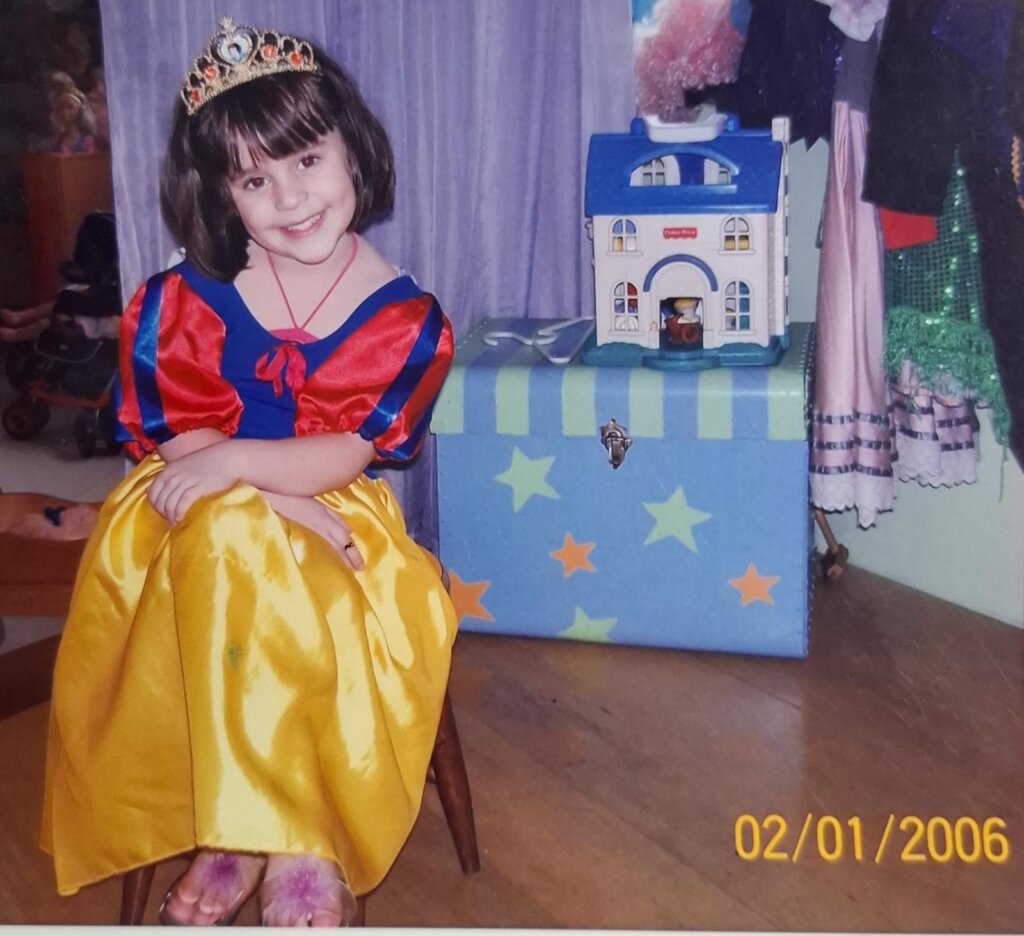By Comunicacao GRAACC | Equipe de Comunicacao do Hospital GRAACC
The first sign came in the form of light. A white reflection in little Maria Helena's eye. At first, her mother, Afra, thought it was just a trick of the lighting, a playful reflection of the sun on the girl's curious little eyes. But the small spot remained there, even when night fell.
“I remember seeing that glow and something inside me screamed that something was wrong,” the mother says. “I immediately remembered a commercial I had seen on television years before, saying that a glow in the eye could be a sign of cancer. My motherly heart knew that this was not a good thing.”
At the age of three years and ten months, the diagnosis came: retinoblastoma, one of the most common childhood eye tumors. A big name for someone so young. In the interior of Pernambuco, where they lived, the news came as a sharp blow, without anesthesia. There, there was no treatment. The only way out was to set out in search of a cure.
December 4, 2006, was etched in her mother's memory. The day they arrived at GRAACC and her daughter gained a future.
The mother left her home, her job, and her other children. She took only the essentials: some clothes, documents, and her youngest child in her arms. “I didn’t know when we would return. I just knew I had to save her.” They went to São Paulo, with no guarantees. For the first few months, they stayed with relatives. Then, they moved to Casa Ronald McDonald Moema, a partnership between GRAACC and Ronald McDonald Institute that houses patients from other states during treatment.
At that moment, GRAACC Hospital became the new routine. Time began to be counted in chemotherapy sessions. Six cycles, seven months. Until the doctors said there was no other choice to save the girl's life: the eye had to be removed. “It was the hardest decision of my life,” says Afra. “But when I spoke to Maria, she gave me the strongest answer I've ever heard. She looked at me and asked: 'If you remove it, will we go home?' I said yes. And she replied: 'Then you can remove it.' She was the one who decided.”
Maria Helena did not hesitate or cry. The youngest of three older brothers, she learned early on to be strong. “If her brothers ran, she ran after them. If they climbed, she found a way. She never accepted being left out,” recalls Afra.
At school, it was no different. After the surgery, her classmates nicknamed her “the girl with the glass eye.” Maria’s strength turned the mockery into pride in her overcoming.
She began telling her story at schools and events, to anyone who would listen. “I wanted people to know that it was just a phase. That it would pass,” says the Pernambuco native. During one of these talks, a writer was enchanted by her story and decided to turn it into a book. Thus “A Menina do Olho de Vidro [The Girl with the Glass Eye] was born, now being sold on the largest e- commerce sites in Brazil.
“She always went above and beyond,” says her mother proudly. “She never accepted limitations, she never played the victim. On the contrary, she always wanted to show that she was capable.”
Today, at 22 years old, he is studying dentistry and knows that a smile can change everything and that there are many ways of seeing the world – and not all of them require eyes.
By GRAACC - Grupo de Apoio ao Adolescente e a Crianca | Equipe de Comunicacao do Hospital GRAACC
By GRAACC - Grupo de Apoio ao Adolescente e a Crianca | Equipe de Comunicacao do Hospital GRAACC
Project reports on GlobalGiving are posted directly to globalgiving.org by Project Leaders as they are completed, generally every 3-4 months. To protect the integrity of these documents, GlobalGiving does not alter them; therefore you may find some language or formatting issues.
If you donate to this project or have donated to this project, you can receive an email when this project posts a report. You can also subscribe for reports without donating.
Support this important cause by creating a personalized fundraising page.
Start a Fundraiser